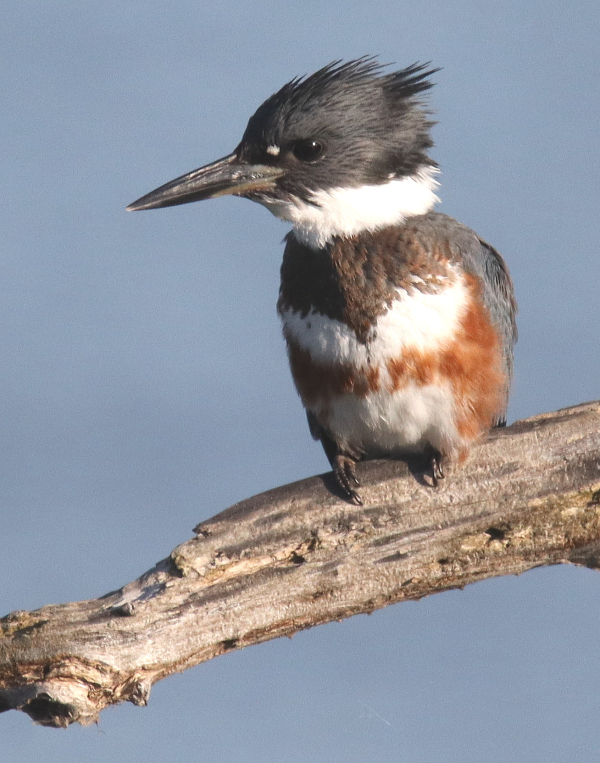
A surprise encounter with a female Belted Kingfisher on the lookout for fish from a partly obscured position on a dead tree provided an extended photo session last Friday.
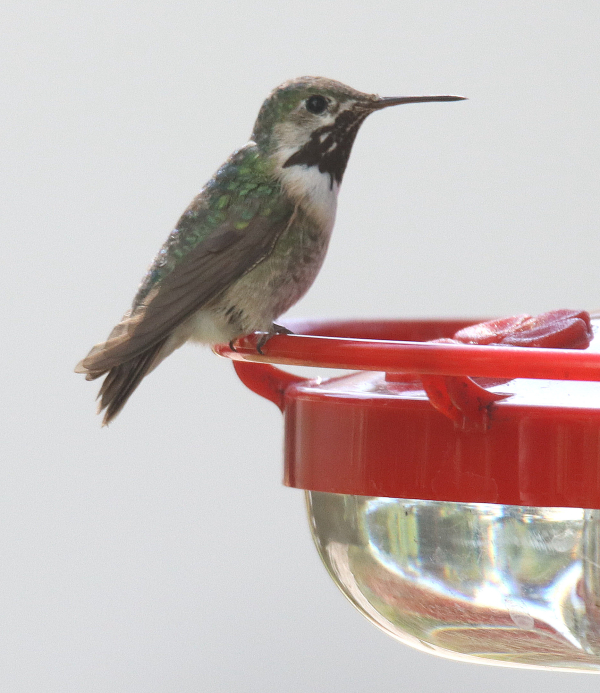
The most exciting bird of the week actually appeared at Paul’s nectar feeder – a male Calliope Hummingbird – apparently only the 4th record of the species in North Dakota!
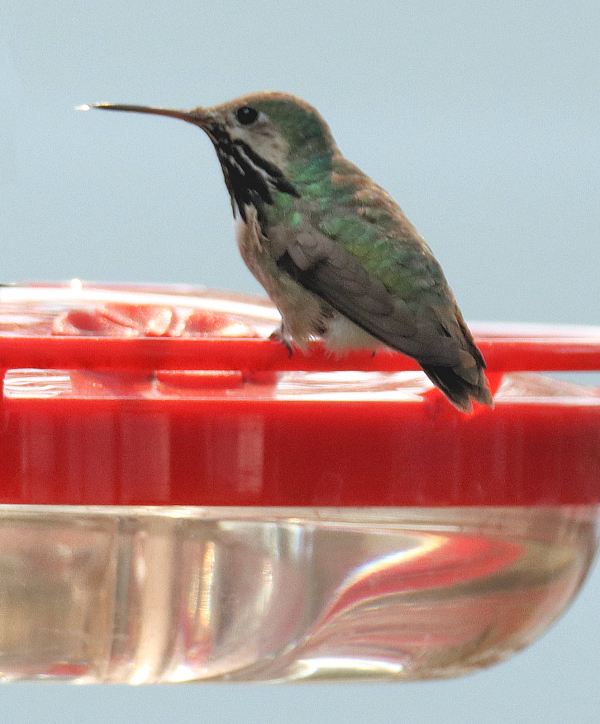
This photo of the same Calliope Hummingbird shows longer gorget feathers on this side, more typical of an adult male. What a thrill to have this rare visitor for an extended period!
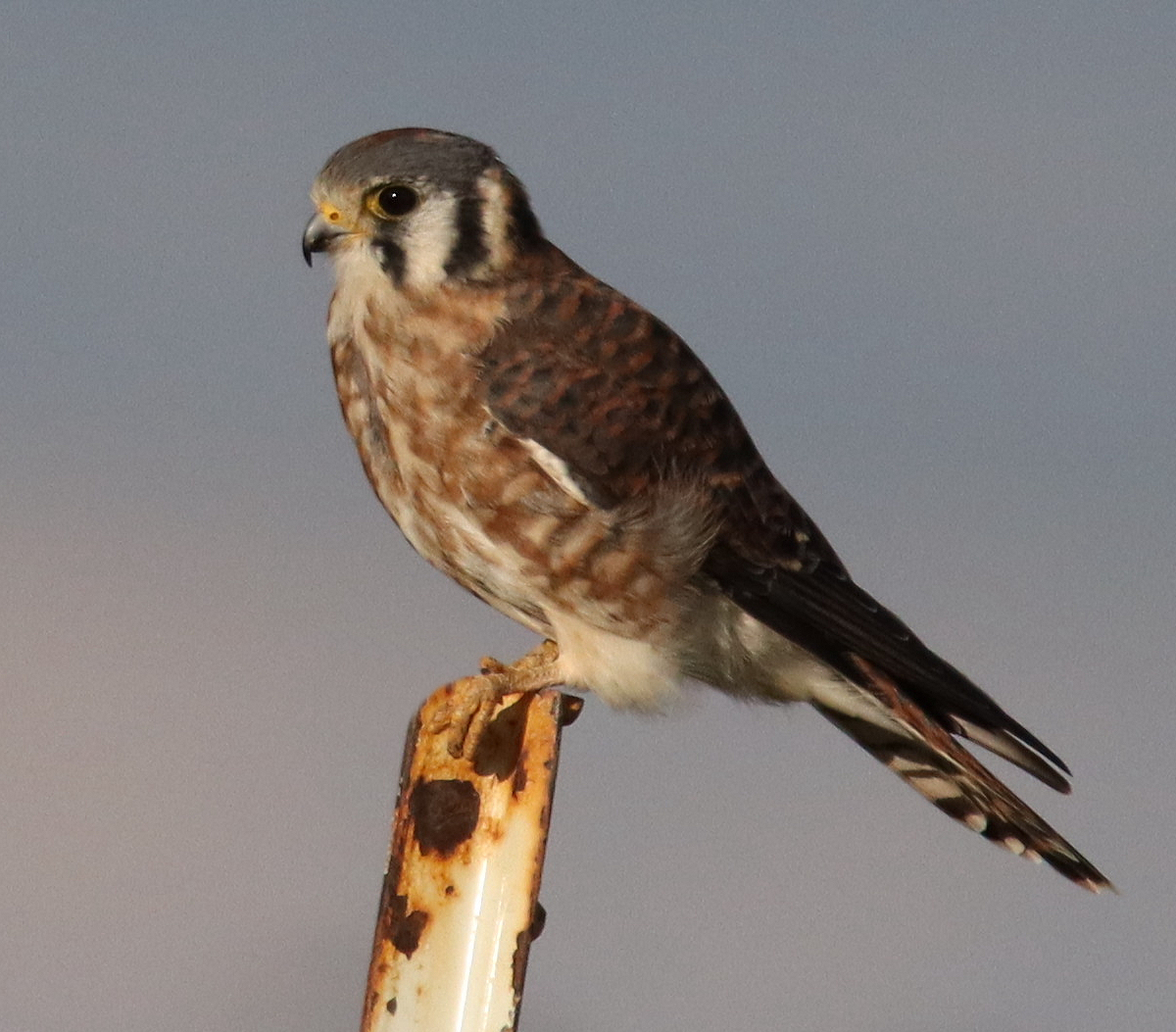
A check of the southwest Fargo kestrel territory produced observations of this female, possibly a recent fledgling, in the company of a molting adult male.
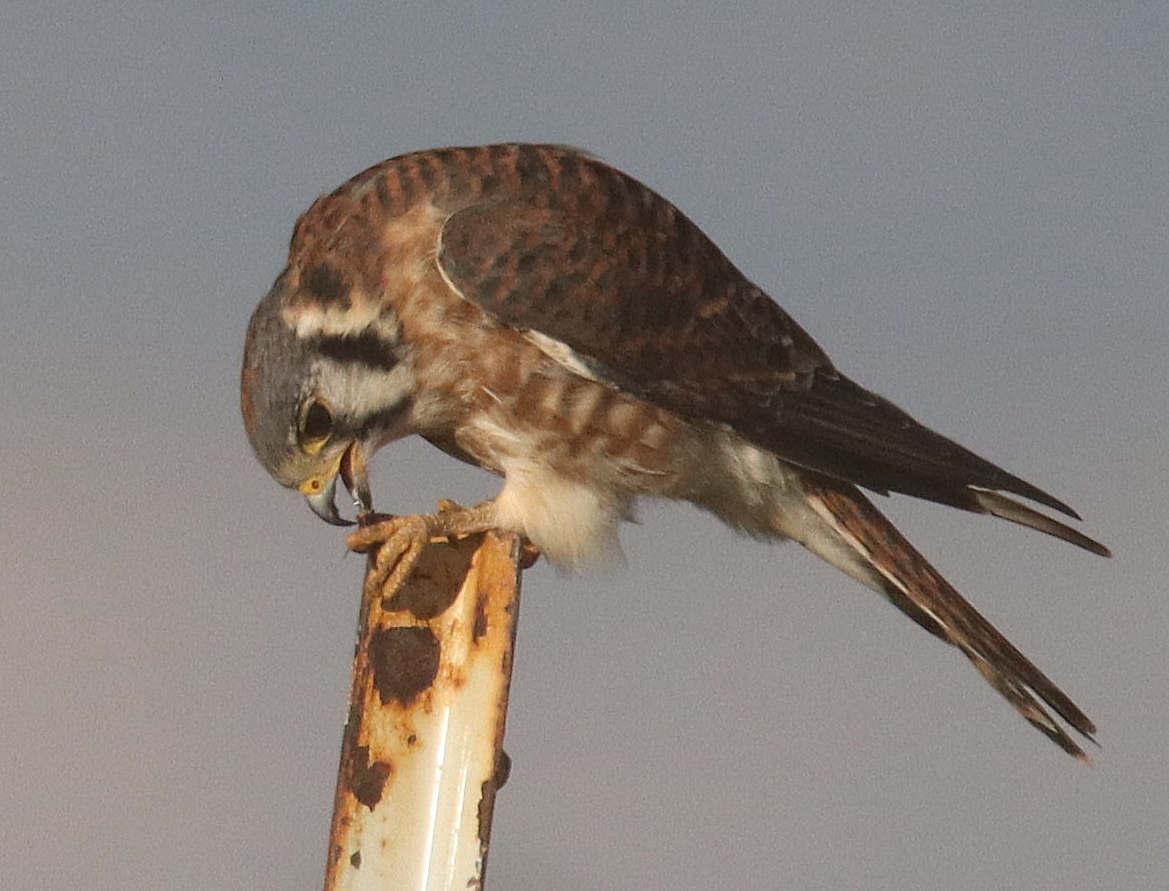
The American Kestrels hunted insects in earnest during the observation period; here the female feeds on one of her catches at the same location Paul initially found 2 male and 1 female fledglings the last week of June.
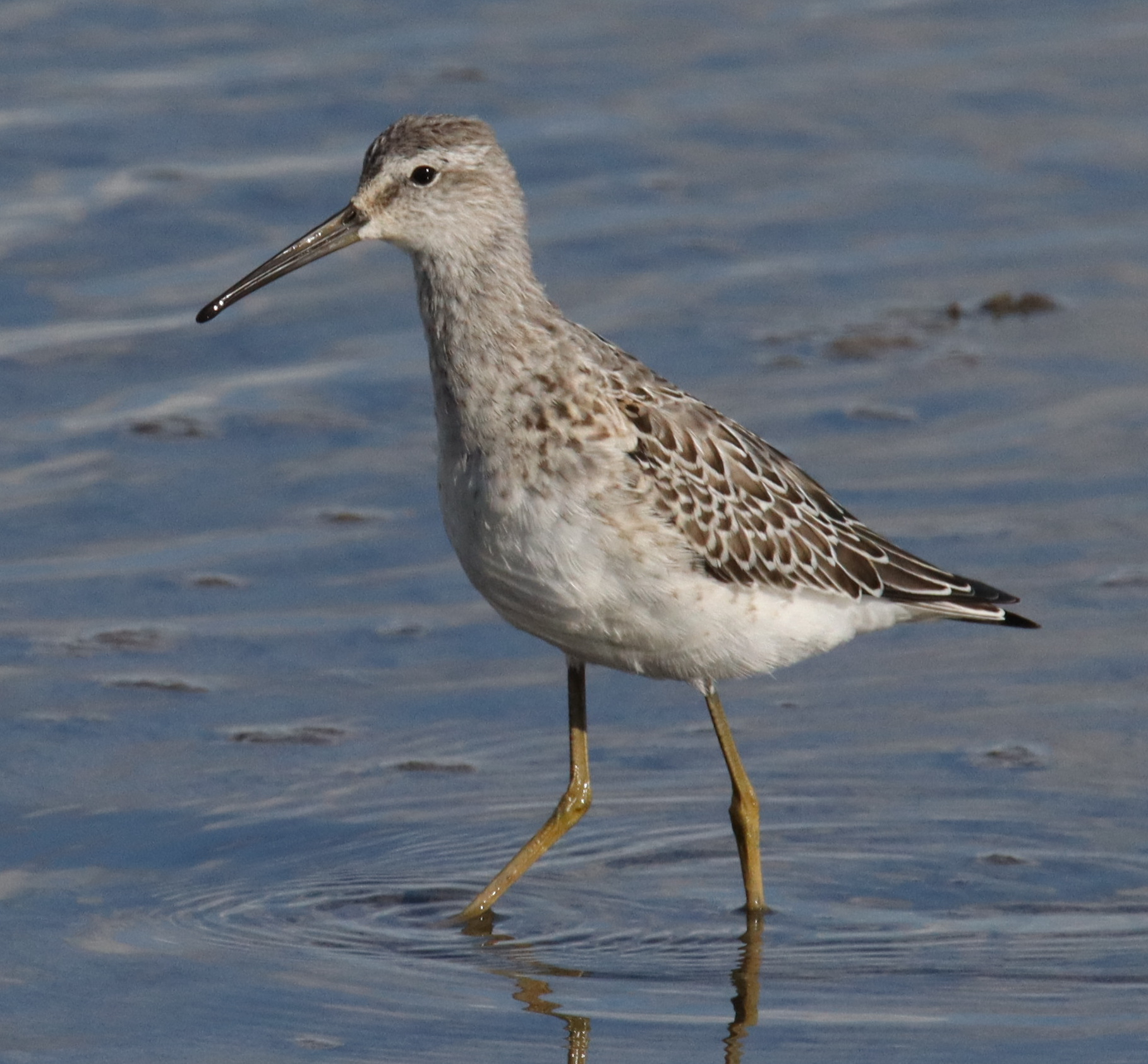
Among the many shorebirds encountered last week, a Stilt Sandpiper in full basic plumage provided a nice pair of photographs on the edge of Charo Marsh.
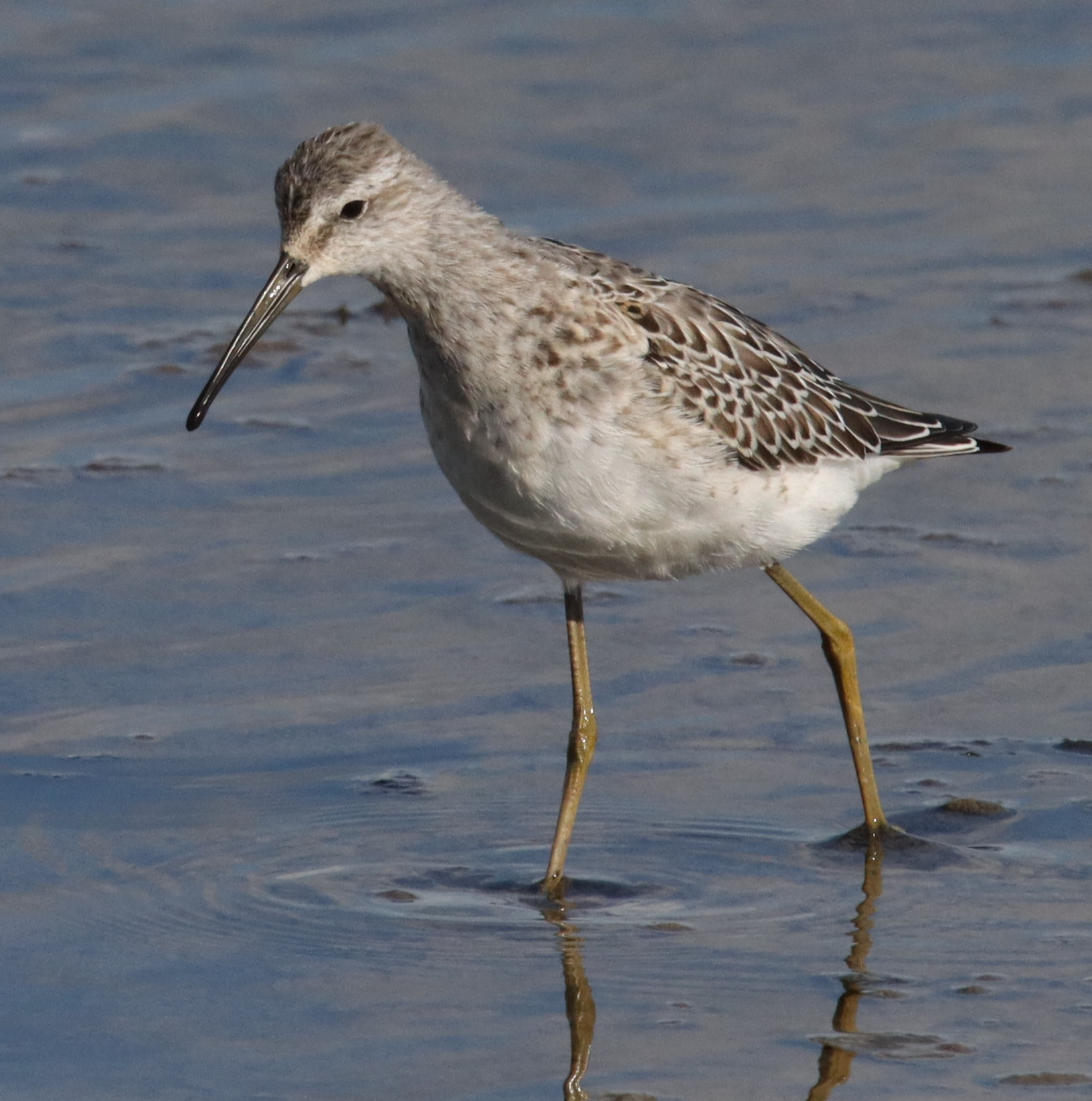
Eight different species of shorebirds are present in the area, but due to high water levels there are only a few shallow water or mudflat areas where sandpipers and plovers can forage and rest.
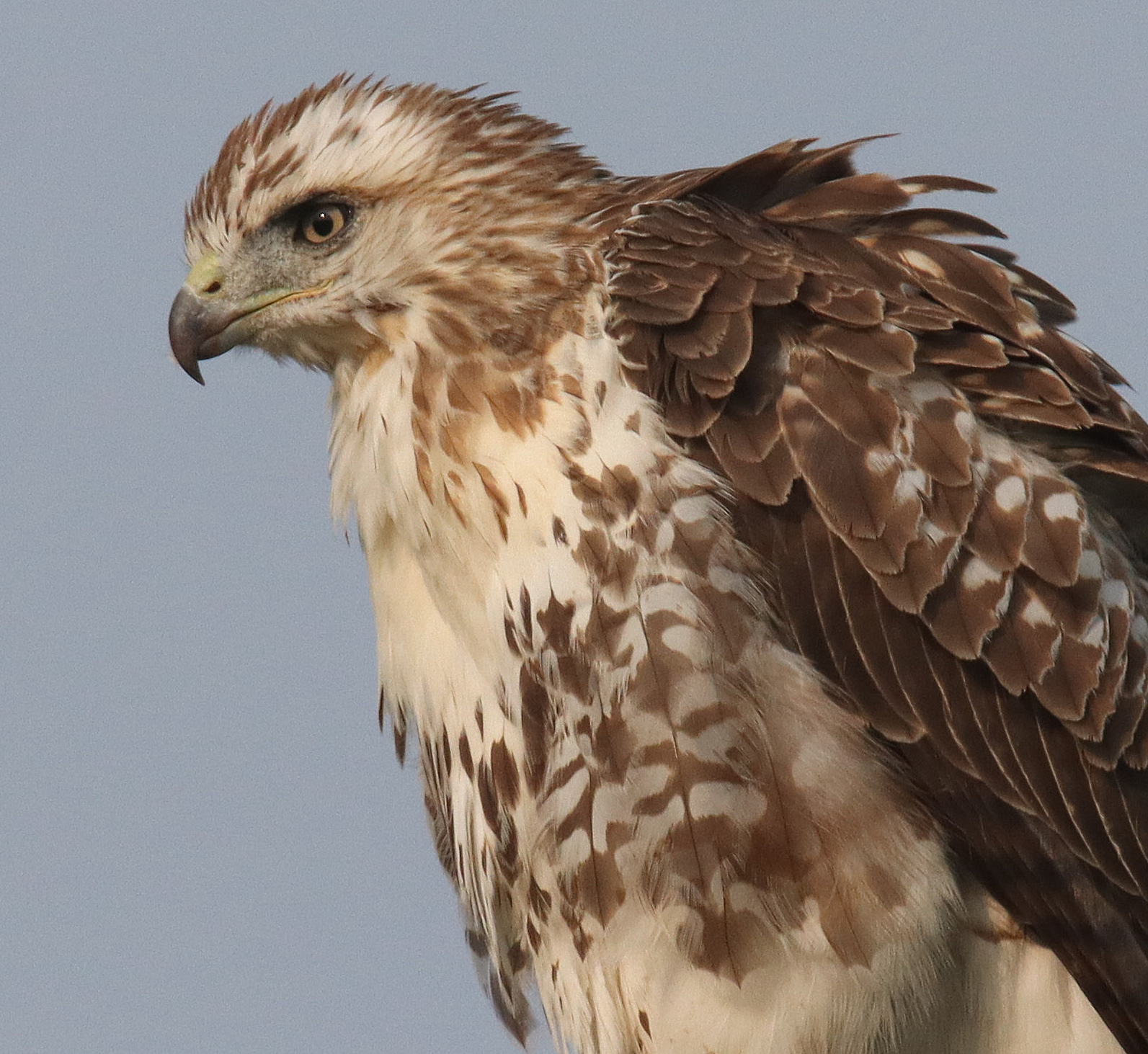
A uniquely colored young Red-tailed Hawk Provided a pair of portrait photos, this one with ruffled plumage after preening.
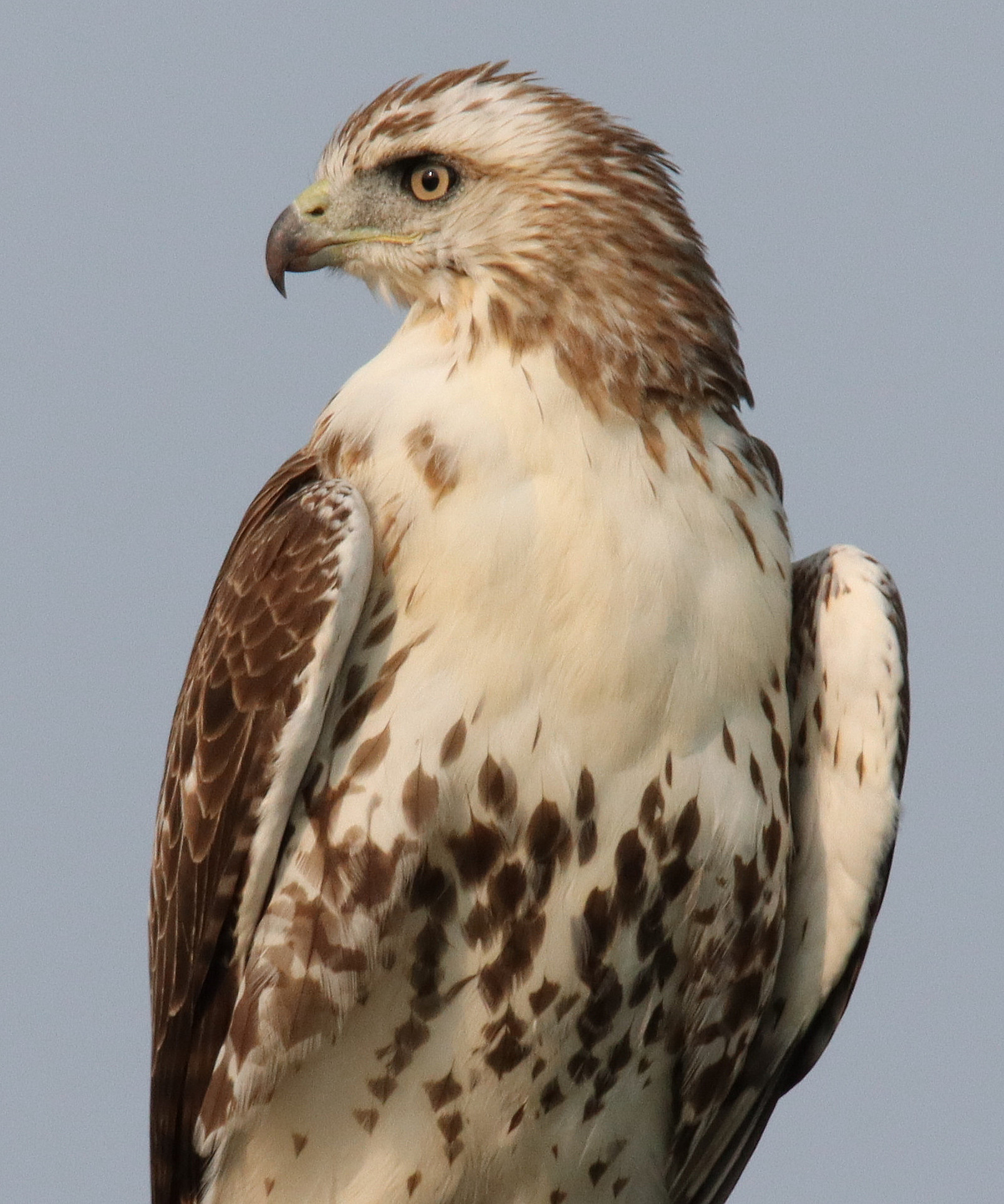
With Red-tailed Hawks obviously on the move some days, a number of different plumage types cn be seen, some with belly bands, others with white undersides, some with dark head and breast plumage, some with lighter plumage types.
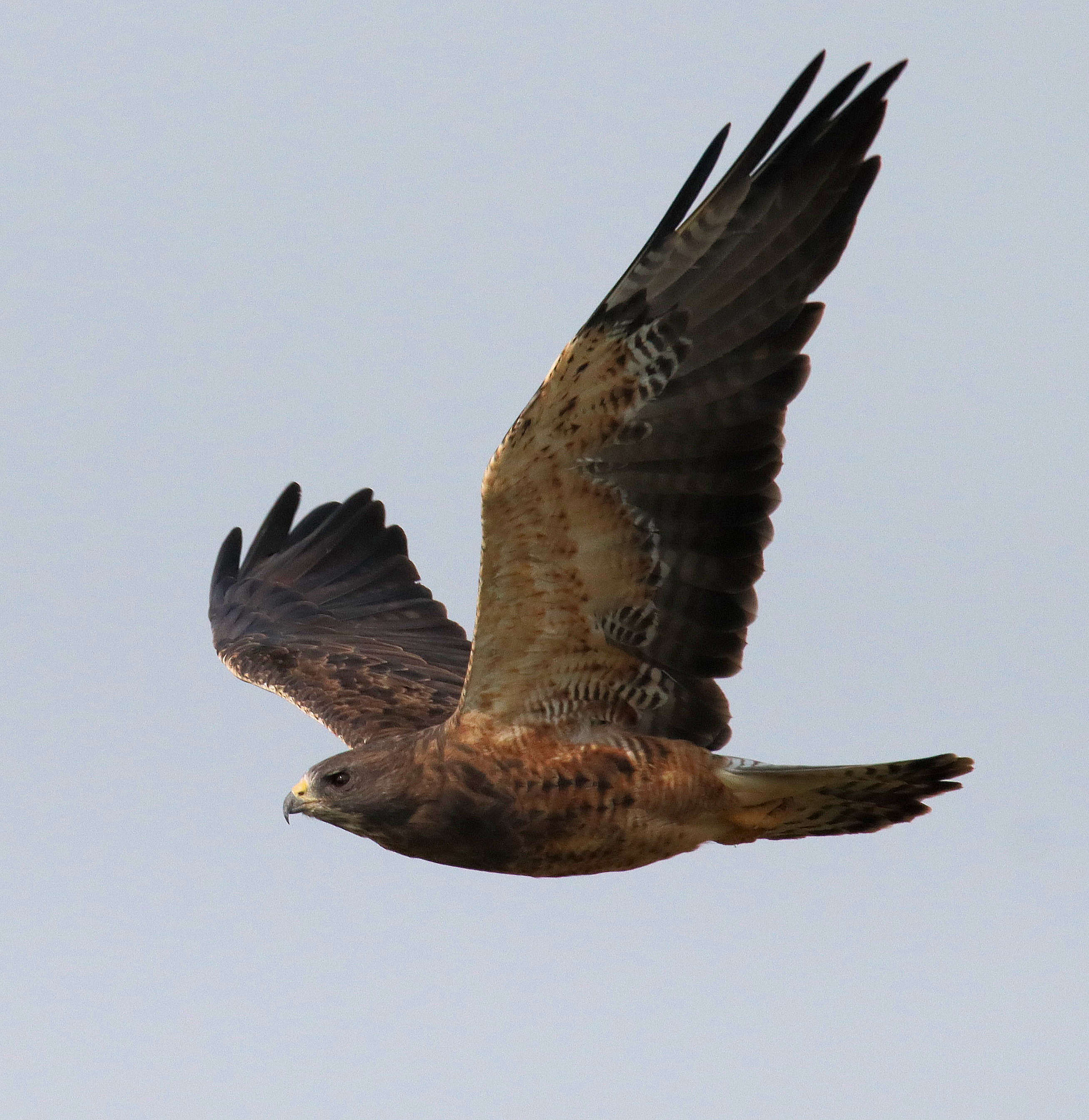
A dark morph Swainson’s Hawk with rufous highlights has been present at a far northwest location, but Saturday was the first time it relinquished a descriptive photo in flight.
|
News Flash! Just as I completed this week’s Rare Birds article, I looked up at my nectar feeder to see a hummingbird perched and feeding. A second look suggested it might be a young male, considering it looked like some gorget feathers showing, but not in the way an adult male Ruby-throated Hummingbird would look. I reached for my binoculars and when I focused a sharp edge at the end of the backward-angled gorget (the iridescent throat feathers) and a tiny thin line of white feathers between the reddish feathers – a Calliope Hummingbird! I also had my camera within reach, so picked it up, focused, and documented the Rare Bird – apparently only the Fourth State Record for North Dakota!
The Calliope Hummingbird also represents my First Yard Bird for the species, and it is my First State Record Calliope Hummingbird too! The exciting new hummingbird was initially seen feeding at 1:40pm, and after it buzzed away the question became, would it return? Yes, at 2:12, 2:37, 3:26, 3:48, and 4:07 before I began a birding drive; then at 7:27 and 7:57 it drank heavily at my nectar feeder. As darkness fell my fingers were crossed, hoping the Calliope would be present Monday, and even beyond that.
Indeed, the first bird I observed Monday morning was the male Calliope Hummingbird – Day 2!! I tried in vain to get a good photo of the bird, but it continued to be quite wary, and my feeder and office desk are not in sync with the incoming sunlight for the best photos – but maybe with some modifications to my photo efforts I will get better images for next week’s issue. Even so, it sure was fun having the little Calliope visiting at 15 or 40 minute intervals. And 3 times I saw a Ruby-throated Hummingbird on hand Tuesday, although the Calliope chased the Ruby-throat(s) twice.
Nonetheless, it was fun to know my nectar feeder was a meeting place for the western-most Rubys and the eastern-most Calliopes – east meets west at my house! Tuesday I appreciated seeing the east-west species again with hope the hummingbird action will continue through the coming warm days.
Minnesota Action
After weeks of poor sunlight and weather conditions during my midweek “weekend” delayed a trip to Minnesota, I decided to press the issue last week for a change in scenery and avifauna. I was overdue for a trip to the western edge of the Eastern Woodlands, to lakes country where another cohort of birds summers – especially Common Loons, Ospreys, and Trumpeter Swans, but also Green Herons, Red-bellied Woodpeckers, Sandhill Cranes, along with birds that I see occasionally, but not regularly like in lakes country: Blue Jays, Wood Ducks, Belted Kingfishers, and Bald Eagles.
As usual, Common Loons were my primary focus from a photography standpoint, but during this trip it was especially exciting to also have a chance to observe and photograph families of Trumpeter Swans with fledgling cygnets numbering from 3 to 6! I share more of the story behind my swan and loon photography in central Minnesota along with several photographs in the Bird Photography feature in this issue.
Seeing how Trumpeter Swans have proliferated in the lakes country, and across much of Minnesota, especially during the past 2 decades, it makes me hopeful that pairs will eventually pioneer into new areas to the west – like I’m hoping the pair of Trumpeters is doing north of my Dakota office. If Bald Eagles can do it, hopefully Trumpeter Swans can too. By the way, my friend Carrol Henderson, who was the first non-game biologist with the Minnesota Department of Natural Resources, is responsible for the reintroduction of Trumpeter Swans in Minnesota, one of the most successful reintroduction projects nationwide.
On my way home I stopped in Fargo for a few moments of shopping, and during prime afternoon sunlight I couldn’t help but check back on the American Kestrels I’ve been monitoring since late June. During my previous visit I observed what appeared to be a female fledgling and a molting adult male kestrel hunting, and these same 2 mini-falcons were on hand last Thursday. The 2 kestrels stayed in close association, and I followed their insect hunting activities without being able to say if they were part of the initial family group, but they certainly used the same perches and hunted in the same territory.
Dakota Birding Highlights
After a 4-day hiatus from checking local birds, I was a bit excited to check on birding hotspots to the south to see what birds continued to grace the landscape and what new birds might be present. The 3 standouts were a Say’s Phoebe, a female Belted Kingfisher, and a Stilt Sandpiper, although if someone from the East Coast, Gulf Coast, or West Coast came with me, they would surely have had other standout birds – it’s all a matter of geography in many cases. Notable species I didn’t see included Red-headed Woodpeckers, fledgling Swainson’s Hawks, and a grebe of any kind, but that might have been a timing factor too – perhaps another day or hour would have yielded a sighting.
Charo Marsh remains the local hotspot to the south, with a nice variety of shorebirds and ducks on hand. A flock of 8 Long-billed Dowitchers caught my attention initially, but there was also a Stilt Sandpiper near 2 Lesser Yellowlegs, 4 Greater Yellowlegs, 4 Least Sandpipers, and 16 Killdeer. There were plenty of Mallards and Gadwalls, some Blue-winged Teal, a male Ruddy Duck, and a flock of 22 Green-winged Teal that stood out as they took flight; plus an adult Swainson’s Hawk was perched at the south end.
On a short side trip well away from Charo I found a smallish female Belted Kingfisher that permitted me to spend about 15 minutes in photo mode near it, and an adult Bald Eagle flew past to the north. Along the south route I counted 4 American Kestrels too. Following up Saturday evening I didn’t see a kingfisher, but an immature Bald Eagle retraced the flight path of the adult observed the previous day. There were also about 10 Red-tailed Hawks on hand to the south where only 2 were present the previous day, suggesting a migration surge.
Earlier Saturday I checked back on the raptors to the northwest, including the 2 families of Swainson’s Hawks I’ve been monitoring; but none of those raptors appeared to be on territory any longer. In fact, I didn’t see a fledgling Swainson’s Hawk during Friday or Saturday birding drives, only adults. Other standout sightings were a flock of 9 Gray Partridges, and 2 more lone Say’s Phoebes separated by a few miles – apparently part of a phoebe migration through the area, even though all kingbirds and other flycatchers have officially vanished.
Closer to home, the shallows on the edge of a lake 1½ miles north of my office has become a focus point for shorebirds, ducks, and Franklin’s Gulls. Saturday evening I estimated 120 Long-billed Dowitchers (estimating 10 by 10), along with about 20 Least Sandpipers, a few Killdeer, 2 Stilt Sandpipers, 1 Pectoral Sandpiper, and a single late Wilson’s Phalarope. On the water, a flock of 14 Green-winged Teal and 2 Northern Shovelers stood apart from the scattered Mallards and American Coots, as did a lone Western Grebe.
Sunday I re-found the 2 newest Swainson’s Hawk fledglings in company with 1 adult, about a mile north of where they were regularly encountered the week before. The other out of the ordinary sighting was another Say’s Phoebe, obviously part of a migration sequence for this species, which is fairly rare during spring and summer in this area; I’ve not seen the kind of fall migration sightings the phoebes have provided before this week.
Local Yokels
Throughout the week I enjoyed the daily thrills of seeing Ruby-throated Hummingbirds at my nectar feeder, and occasionally at my blooming flowers. I’m also glad to see Cedar Waxwings and American Robins continuing to feed at a nearby berry-producing mountain ash tree. Friday observations of between 6 and 24 Cedar Waxwings at a time were memorable, and 6 or 8 American Robins joined the action less than 100 yards northeast of my yard.
Saturday a male Northern Flicker was foraging for ants in low grass in my yard, but the obvious standout home-based sighting continues to be the male Calliope Hummingbird! I’ll keep you posted about how long it continues to grace my feeding station and flowers, but stay alert – it’s that time of year when you never know what unusual bird might appear outside your windows or at your favorite birding hotspots – Enjoy the season!
Article and Photos by Paul Konrad
Share your bird sightings and photographs at editorstbw2@gmail.com